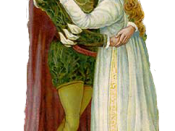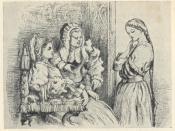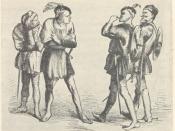Certain parallels can be drawn between William Shakespeare's plays, 'A Midsummer Night's Dream', and 'Romeo and Juliet'. These parallels concern themes and prototypical Shakespearian character types. Both plays have a distinct pair of 'lovers', Hermia and Lysander, and Romeo and Juliet, respectively. Both plays could have also easily been tragedy or comedy with a few simple changes. A tragic play is a play in which one or more characters is has a moral flaw that leads to his/her downfall. A comedic play has at least one humorous character, and a successful or happy ending. Comparing these two plays is useful to find how Shakespeare uses similar character types in a variety of plays, and the versatility of the themes which he uses.
In 'Romeo and Juliet', Juliet is young, 'not yet fourteen', and she is beautiful, and Romeo's reaction after he sees her is,
'O, she doth teach the torches to burn bright!
It seems she hangs upon the cheek of night
As a rich jewel in an Ethiop's ear
Beauty to rich for use, for the earth too dear!'
Juliet is also prudent, 'Although I joy in thee, I have no joy in this contract tonight.
It is too rash, too unadvised, too sudden.' She feels that because they have just met, they should abstain from sexual intercourse.
Hermia is also young, and prudent. When Lysander suggests that 'One turf shall serve as a pillow for both of us, One heart, one bed, two bosoms, and one troth,' Hermia replies 'Nay, good Lysander. For my sake, my dear, Lie further off yet; do not lie so near.' Although this couple has known each other for a while (Romeo and Juliet knew each other for one night when the above quote was spoken), Hermia also abstains from even...



Very good!
This essay offers deep analysis and good examples.
2 out of 2 people found this comment useful.